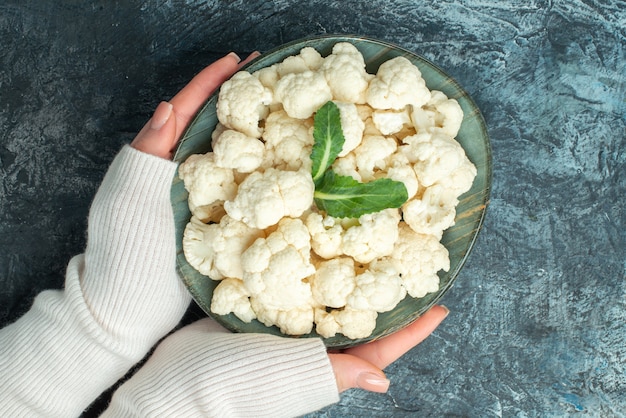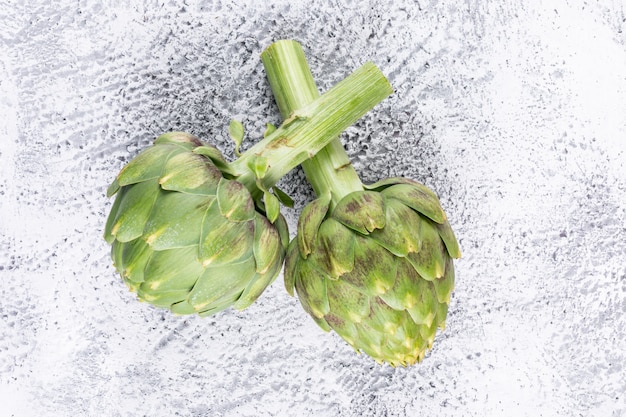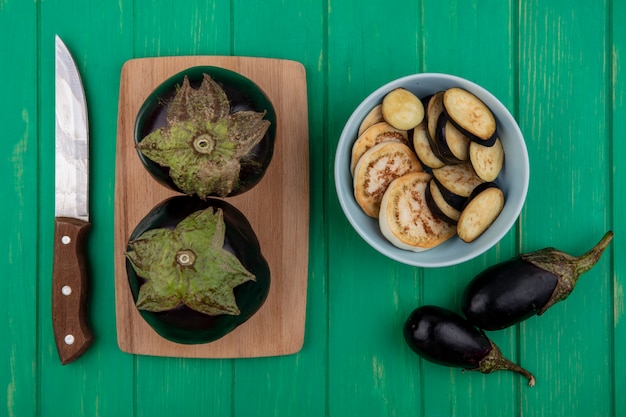Let's face it, artichoke hearts can be a bit intimidating. They're often associated with fancy restaurants and complicated recipes, but I'm here to tell you that's a load of hogwash! artichoke hearts can be incredibly versatile and easy to cook, even for a novice in the kitchen.
This comprehensive guide will take you from choosing the perfect artichokes to creating delectable dishes, transforming those little bundles of deliciousness into a kitchen staple. Get ready to ditch the intimidation and embrace the wonderful world of artichoke hearts!
(Part 1) Choosing the Perfect Artichoke Hearts

Choosing the right artichoke hearts is the foundation for a successful culinary journey. It's like picking out the perfect ingredients for a masterpiece – you want to start with the best quality you can find.
Fresh is Best, But Don't Be Afraid of Canned
The fresh artichoke heart is a real treat, bursting with vibrant flavour. You'll know you've found a winner when you see a firm, bright green artichoke, free from any blemishes or bruising. The best time to find these beauties is during the spring and summer months, when they're at their peak.
Now, I won't lie, fresh artichoke hearts can be a bit of a challenge. Preparing them is a bit of a process, but oh, the flavour is worth every minute.
For those of us who prefer a more convenient option, canned artichoke hearts are a godsend. They're already cooked and ready to use, making them perfect for quick weeknight meals. Just be sure to choose a high-quality brand and always rinse them well to get rid of any excess salt.
Frozen artichoke hearts offer a great compromise. They're generally more affordable than fresh and can be used straight from the freezer. They're perfect for having on hand for quick meals or for adding to soups and stews.
A Few Things to Look Out For
- Colour: Steer clear of any artichoke hearts that have brown or yellow spots. This is a sign they're starting to go bad. Look for a vibrant green colour instead.
- Firmness: Fresh artichoke hearts should feel firm and springy to the touch. Avoid any that feel soft or mushy – they're past their prime.
- Smell: Fresh artichoke hearts have a lovely, earthy aroma. If they smell sour or musty, it's best to give them a miss.
(Part 2) The Art of Cleaning Artichoke Hearts

Okay, so you've got your artichoke hearts. Now comes the cleaning process, which might seem daunting, but it's really quite straightforward. Think of it as a little adventure, a journey to the heart of the artichoke!
Step-by-Step Guide to Cleaning Fresh Artichoke Hearts
1. Trim the Base: Start by trimming off the tough base of the artichoke heart. Using a sharp knife, cut off the bottom, about an inch below where the leaves start to open up. You're essentially removing the hard part where the artichoke was anchored to the ground.
2. Remove the Outer Leaves: Those prickly outer leaves? They're not edible, so we need to bid them farewell. Grab the first two or three layers and snap them off. You might want to wear gloves for this step, especially if you're new to the game.
3. Trim the Tips: Now, use a sharp knife to trim off the pointy tips of the remaining leaves. This will make them easier to eat, and let's be honest, who wants to be dealing with pointy bits while trying to enjoy their dinner?
4. Scoop out the Choke: This is the part that often throws people off. The "choke" is the fuzzy, inedible part that sits in the centre of the artichoke heart. It needs to be removed before cooking. Grab a spoon and gently scoop out the choke. It's a bit like digging for treasure, but instead of gold, you're finding deliciousness!
5. Give it a Good Rinse: Once you've cleaned the artichoke hearts, give them a good rinse under cold water to remove any lingering dirt or debris. They'll be good to go now!
Pro Tip: Lemon Juice is Your Friend
After you've cleaned your artichoke hearts, soak them in a bowl of lemon water. This will help to prevent them from discolouring and will also add a subtle, zesty flavour. It's a simple trick, but it makes a big difference!
(Part 3) Different Ways to Cook Artichoke Hearts

The beauty of artichoke hearts is that they lend themselves to various cooking methods, each adding its unique flavour profile and texture. Let's explore a few of these methods and unlock the full potential of this versatile ingredient.
1. Boiling: The Classic Way
Boiling is the most traditional method for cooking artichoke hearts. It's a simple and reliable way to achieve a tender, cooked artichoke heart, perfect for salads, dips, or even as a standalone side dish.
- Fill a large pot with water and bring it to a rolling boil. Add a pinch of salt and a squeeze of lemon juice. The salt seasons the artichokes, and the lemon juice helps to prevent discoloration. It's a win-win situation!
- Carefully lower the artichoke hearts into the boiling water, making sure they're fully submerged.
- Bring the water back to a boil, then reduce the heat to a gentle simmer. Cook for about 20-30 minutes, or until the artichoke hearts are tender enough to pierce easily with a fork.
- Remove the artichoke hearts from the water using a slotted spoon and drain them well. You can serve them hot or cold, depending on your preference.
2. Steaming: A Lighter Approach
Steaming is a fantastic alternative to boiling, offering a healthier option without compromising flavour. It produces a delicate, flavourful artichoke heart that's a real treat.
- Fill a saucepan with about an inch of water and bring it to a boil.
- Place a steamer basket in the saucepan and add the artichoke hearts. Make sure the water doesn't touch the basket.
- Cover the saucepan with a lid and steam for about 20-25 minutes, or until the artichoke hearts are tender.
- Remove the artichoke hearts from the steamer basket and serve. Enjoy the subtle, delicate flavour!
3. Grilling: For a Smoky Flavour
Grilling artichoke hearts is a great way to add a smoky, charred flavour. It's a perfect addition to any barbecue spread, and it pairs beautifully with a variety of sauces and toppings.
- Preheat your grill to medium heat. You want a nice, even heat for even cooking.
- Brush the artichoke hearts with olive oil. This helps to prevent sticking and creates a delicious golden crust.
- Season the artichoke hearts with salt, pepper, and any other herbs or spices you like. I love to add a bit of garlic powder and paprika for an extra kick.
- Place the artichoke hearts on the grill and cook for about 10-15 minutes, turning them occasionally, until they are tender and slightly charred. Be careful when flipping them, those grill grates can get hot!
- Remove the artichoke hearts from the grill and serve immediately. Enjoy that smoky goodness!
4. Roasting: The Ultimate comfort food
Roasting artichoke hearts is a fantastic way to bring out their natural sweetness and create a comforting, almost caramelized flavour. It's a simple and satisfying method that yields delicious results.
- Preheat your oven to 400 degrees Fahrenheit (200 degrees Celsius). You want a good, hot oven for this method.
- Brush the artichoke hearts with olive oil, and season them with salt, pepper, and any other herbs or spices you like. I love to add a squeeze of lemon juice and some fresh thyme for a bright, fresh flavour.
- Place the artichoke hearts in a single layer on a baking sheet. This ensures even cooking and prevents them from steaming instead of roasting.
- Roast for about 20-25 minutes, or until they are tender and slightly browned. Keep an eye on them, as oven temperatures can vary.
- Remove the artichoke hearts from the oven and serve. Enjoy that delicious, caramelized flavour!
5. Sautéing: A Quick and Easy Option
Sautéing artichoke hearts is a great way to cook them quickly and easily. It's perfect for a simple side dish or for using in a variety of recipes.
- Heat some olive oil in a large skillet over medium heat. You want the oil to be hot enough to sizzle but not smoking.
- Add the artichoke hearts to the skillet and cook for about 5-7 minutes, stirring occasionally, until they are tender and slightly browned. Keep an eye on them to prevent burning.
- Season with salt and pepper to taste. You can also add some garlic or other herbs for extra flavour. Let your creativity flow!
(Part 4) How Long to Cook Artichoke Hearts
The cooking time for artichoke hearts will vary depending on their size and the method you choose. Here's a general guide to get you started:
| Cooking Method | Cooking Time |
|---|---|
| Boiling | 20-30 minutes |
| Steaming | 20-25 minutes |
| Grilling | 10-15 minutes |
| Roasting | 20-25 minutes |
| Sautéing | 5-7 minutes |
(Part 5) Knowing When Your Artichoke Hearts Are Done
You've got to get that timing right! A perfectly cooked artichoke heart will be tender and easy to eat. Here's how to check if your artichokes have reached peak deliciousness:
- Fork Test: The best way to test if your artichoke hearts are cooked is to pierce them with a fork. If the fork slides in easily without resistance, they're ready to go.
- Appearance: As they cook, artichoke hearts will soften and their colour will change from a bright green to a more muted, softer green.
- Smell: Cooked artichoke hearts have a lovely, slightly sweet aroma. If you're unsure, give them a sniff. If they smell delicious, they probably are!
(Part 6) Amazing Ways to Use Cooked Artichoke Hearts
Now that we've got our perfectly cooked artichoke hearts, let's put them to good use! Here are a few ideas to get your creative juices flowing and unlock the full flavour potential of these wonderful vegetables.
1. The Ultimate Side Dish
Artichokes make a brilliant side dish, adding a touch of sophistication and flavour to any meal. Serve them hot or cold, dressed with a simple vinaigrette, lemon butter, or a sprinkle of Parmesan cheese. They're a crowd-pleasing addition to any table.
2. Superstar Salad Ingredient
Add some heart-stopping flavour to your salads. Chopped artichoke hearts make a fantastic addition to a variety of salads, from classic Caesar to colourful Mediterranean. They add a unique texture and flavour that elevates any salad.
3. Dips and Spreads
Artichokes are a natural pairing for dips and spreads. Combine them with creamy cheeses like ricotta or goat cheese, or whip up a delicious artichoke and spinach dip. They add a rich, earthy flavour that complements creamy textures perfectly.
4. Pasta Perfection
Add a touch of elegance to your pasta dishes. Toss artichoke hearts with your favourite pasta sauce, or use them as a topping for a simple pesto pasta. They add a touch of sophistication and a welcome burst of flavour.
5. Pizza Powerhouse
Artichokes add a unique touch to your pizza creations. Pile them onto your favourite pizza alongside other toppings like mozzarella, pepperoni, or mushrooms. They're a great alternative to traditional toppings and add a flavour dimension that's both unique and delicious.
6. Soup Sensations
Elevate your soup game with artichokes. Add them to creamy soups like potato or broccoli soup for a boost of flavour and texture. They add a depth of flavour and a delightful bite to any creamy soup.
7. The Star of the Show
Don't be afraid to make artichoke hearts the main attraction. Fill them with creamy cheeses, herbs, and spices, and bake them until golden brown for a truly delicious and impressive dish. They make a beautiful and satisfying centrepiece for any dinner party.
(Part 7) Preserving the Artichoke Heart Magic
Want to keep that deliciousness around for a bit longer? Here are a few ways to preserve your artichoke heart goodness and enjoy them whenever you crave their unique flavour:
1. Freezing: A Simple Solution
You can freeze cooked artichoke hearts for later use. Simply blanch them in boiling water for a few minutes, drain them well, and freeze them in a freezer-safe bag. This is a great way to have them on hand for quick meals.
2. Pickling: A Tangy Twist
Pickled artichoke hearts are a delicious and tangy treat. You can find them ready-made at the grocery store, or you can make your own by simmering them in a brine of vinegar, water, and spices. They add a delightful tangy flavour to salads, sandwiches, or even as a standalone snack.
(Part 8) FAQs: Your Artichoke Heart Questions Answered
We've covered a lot of ground, but you might still have some questions about artichoke hearts. I'm here to answer them:
1. Are Artichoke Hearts Good for You?
Absolutely! Artichoke hearts are packed with nutrients, including vitamins C, K, and folate, as well as fibre and antioxidants. They're also a good source of potassium and magnesium. They're a delicious and nutritious addition to any diet.
2. What Do Artichoke Hearts Taste Like?
Artichokes have a unique, slightly sweet and nutty flavour. Some people describe them as having a taste similar to asparagus or spinach, but with a more complex flavour profile. They're a flavour that's both familiar and exciting.
3. How Do You Store Artichoke Hearts?
Fresh artichoke hearts should be stored in the refrigerator for up to 3-5 days. Canned artichoke hearts can be stored in the pantry for up to a year. Frozen artichoke hearts can be stored in the freezer for up to 6 months. Proper storage ensures you can enjoy their flavour for as long as possible.
4. Can You Eat the Entire Artichoke Heart?
You can eat the entire artichoke heart, except for the fuzzy choke in the centre. That fuzzy part isn't edible, so be sure to remove it before cooking or eating.
5. How Many Calories Are in an Artichoke Heart?
One medium-sized artichoke heart contains about 25 calories. They're a low-calorie, nutrient-rich addition to any meal.
There you have it, my friend! Your complete guide to mastering artichoke hearts. I hope this guide has inspired you to embrace these delicious vegetables and enjoy all they have to offer. Happy cooking!
Everyone is watching

Prime Rib Roast Cooking Time Chart: Per Pound Guide
Cooking TipsPrime rib roast. Just the name conjures images of lavish dinners, crackling fires, and hearty laughter. It’s ...

How Long to Bake Potatoes in the Oven (Perfect Every Time)
Cooking TipsBaked potatoes are a staple in my kitchen. They're incredibly versatile, delicious, and surprisingly easy to m...

Perfect Rice Every Time: The Ultimate Guide to Cooking Rice
Cooking TipsAs a self-proclaimed foodie, I've always been a bit obsessed with rice. It's the foundation of countless cuisi...

The Ultimate Guide to Cooking Asparagus: Tips, Techniques, and Recipes
Cooking TipsAsparagus. The mere mention of this spring delicacy conjures up images of vibrant green spears, crisp and burs...

Ultimate Guide to Cooking the Perfect Thanksgiving Turkey
Cooking TipsThanksgiving. Just the word conjures up images of overflowing tables laden with delicious food, the scent of r...
